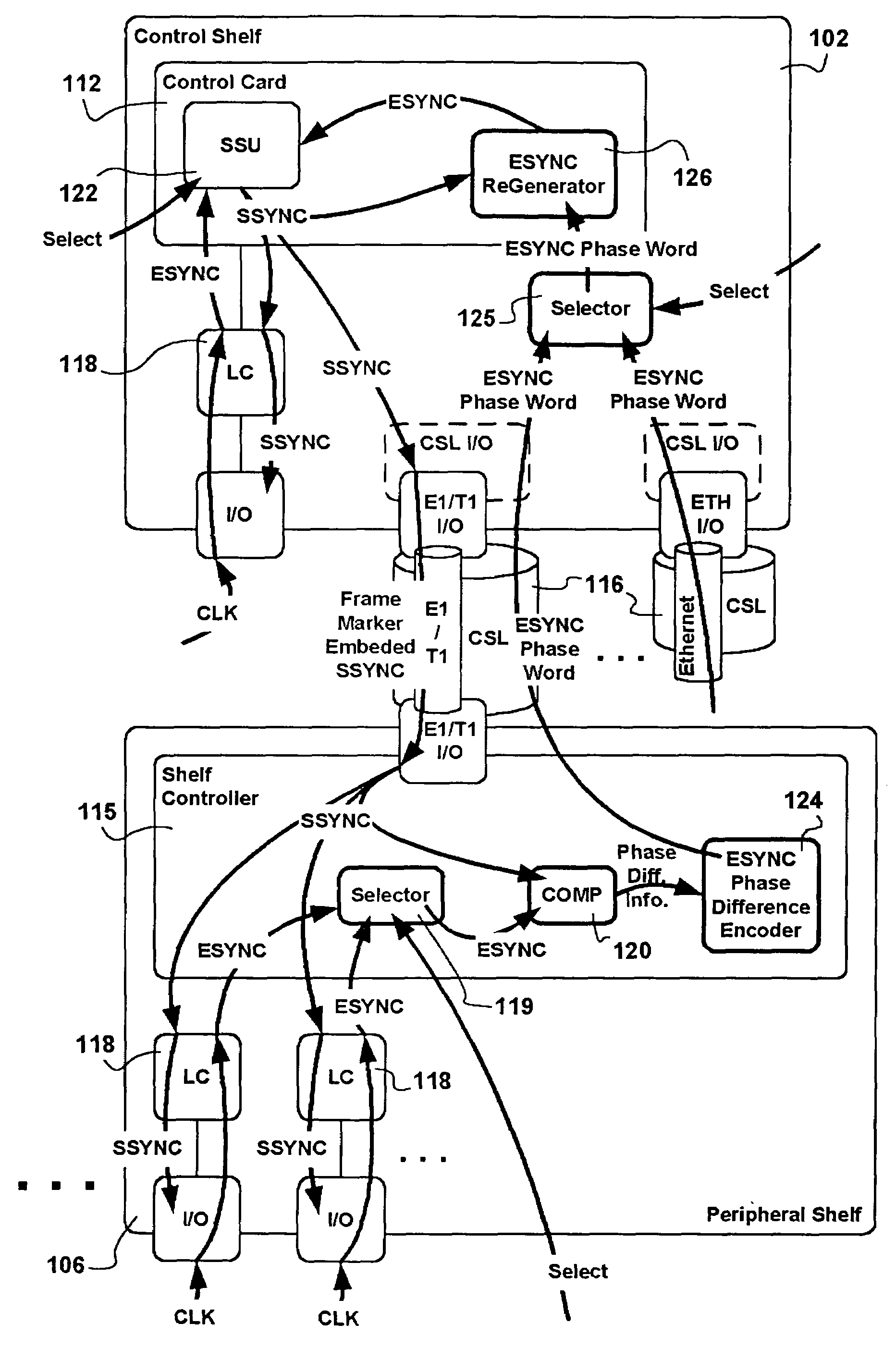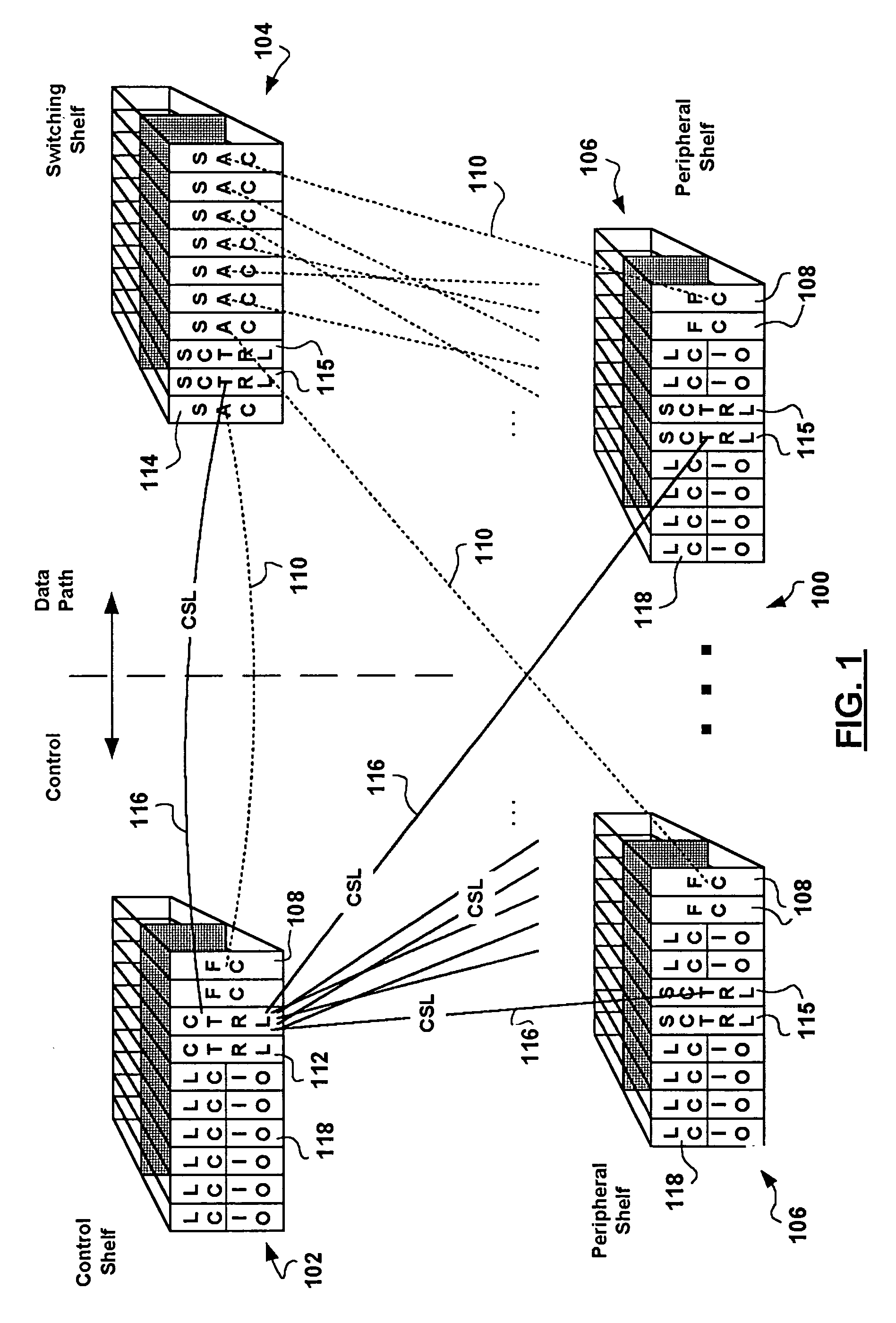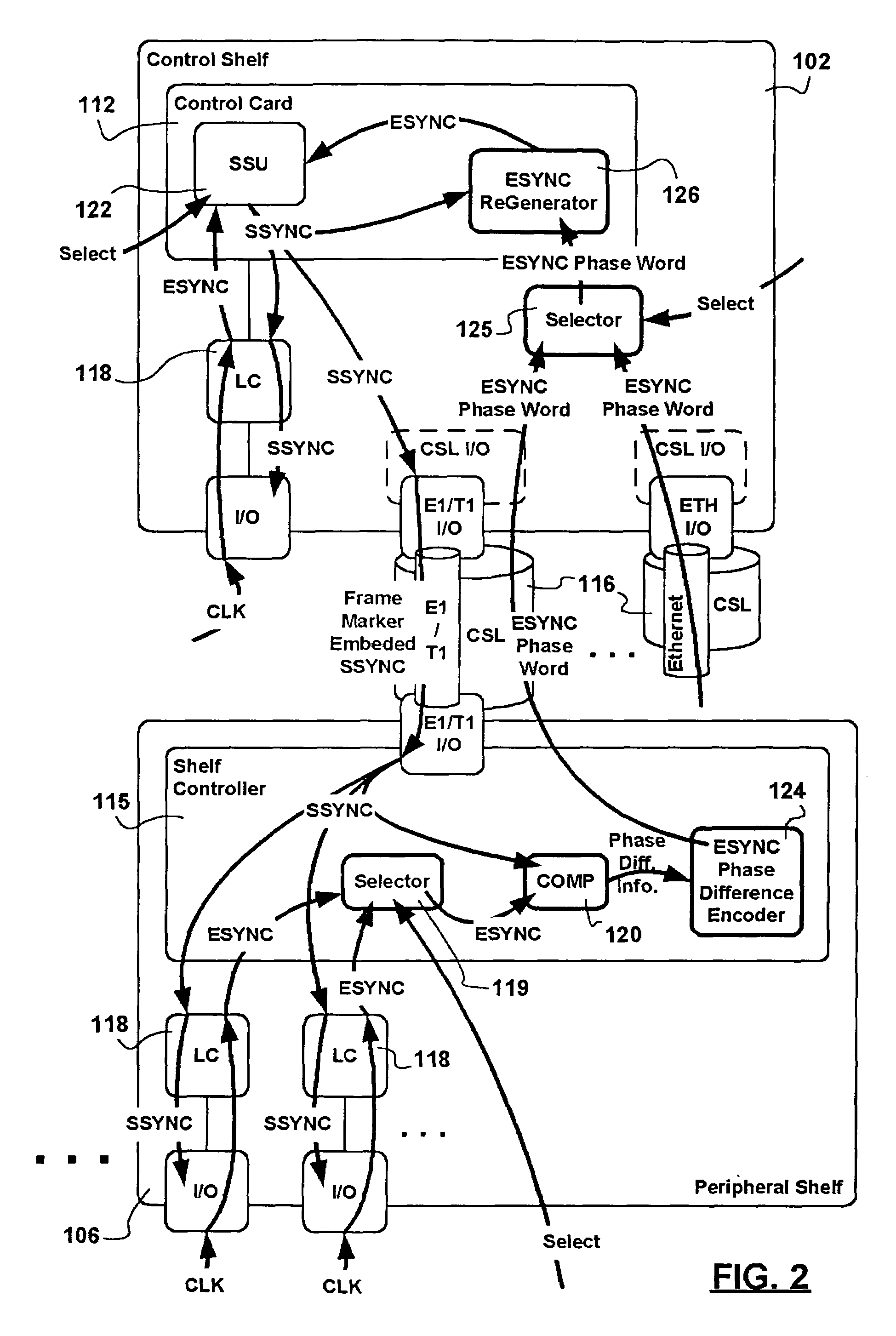Multi-shelf system clock synchronization
a multi-shelf system and clock technology, applied in multiplex communication, instruments, generating/distributing signals, etc., can solve the problems of reducing the ability of communications network nodes to synchronize content transport, synchronizing to an absolute clock signal is difficult to achieve and ensure, and the infrastructure is reduced.
- Summary
- Abstract
- Description
- Claims
- Application Information
AI Technical Summary
Benefits of technology
Problems solved by technology
Method used
Image
Examples
Embodiment Construction
[0033]It is desired that a multi-shelf network node design and operation enable the selection of a master clock signal received via any interface card (line card 118) of either the control shelf 102 or any of the peripheral shelves 106 of a multi-shelf network node 100.
[0034]In view of the fact that only one E1 / T1 trunk is available in the control services link 116 which could potentially bring a master clock signal, and particularly the analog characteristics thereof, from a peripheral shelf 106 to the control shelf 102, one solution would be to provide an E1 / T1 trunk in a control services link 116 per peripheral shelf interface card connector. Such a solution would however suffer from: the necessity of deploying and maintaining a large number of E1 / T1 trunks, a reduced port density, a complicated shelf controller 115 and control card 112 design, a dedicated non-standard shelf controller and control card connector design, a complicated control shelf backplane signal trace design, E...
PUM
 Login to View More
Login to View More Abstract
Description
Claims
Application Information
 Login to View More
Login to View More - R&D
- Intellectual Property
- Life Sciences
- Materials
- Tech Scout
- Unparalleled Data Quality
- Higher Quality Content
- 60% Fewer Hallucinations
Browse by: Latest US Patents, China's latest patents, Technical Efficacy Thesaurus, Application Domain, Technology Topic, Popular Technical Reports.
© 2025 PatSnap. All rights reserved.Legal|Privacy policy|Modern Slavery Act Transparency Statement|Sitemap|About US| Contact US: help@patsnap.com



